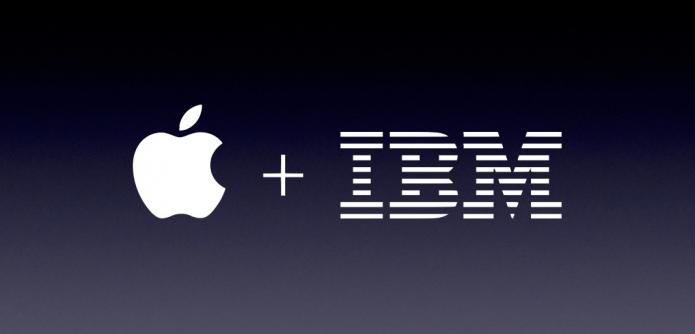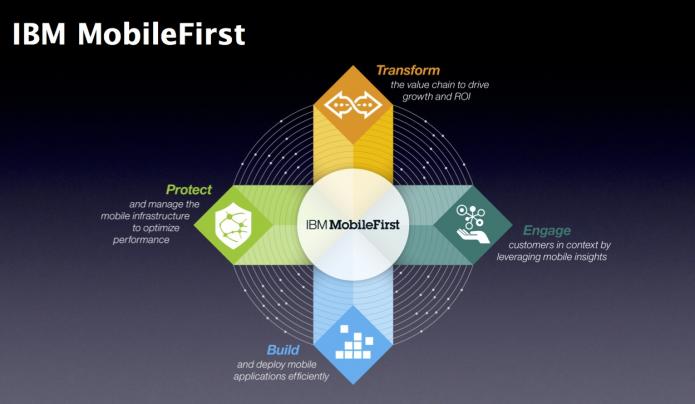 With the advent of bring-your-own-device (BYOD), enterprises have adopted Apple products, sometimes reluctantly, in quantities never seen before. Much of this adoption has come primarily in the form of iPhones and iPads. The exposure of many enterprise applications to the web have also made the integration with Apple’s Macintosh less of a support issue for many organizations. But legacy applications running on mainframes still dominate healthcare, telecommunications, banking, government, and many other industries.
With the advent of bring-your-own-device (BYOD), enterprises have adopted Apple products, sometimes reluctantly, in quantities never seen before. Much of this adoption has come primarily in the form of iPhones and iPads. The exposure of many enterprise applications to the web have also made the integration with Apple’s Macintosh less of a support issue for many organizations. But legacy applications running on mainframes still dominate healthcare, telecommunications, banking, government, and many other industries.
If large enterprises want to bring their legacy applications to Apple platforms, that would typically mean in-house development, months of procurement vetting and development partner selection meeting, negotiating development contracts, or the use of emulators and web-based tools to create web-based (non-native) windows into their enterprise applications. For some, using major platforms like SAP, the vendor themselves have created apps—but again, many of those enterprise applications either aren’t the current version of the applications or are custom-built applications, often built using older platforms, tools, and technologies.
Enter IBM. Many analysts have reported on this new announcement and said that it won’t drive many sales for Apple. That isn’t the intention. Although IBM is now a major Apple reseller, able to bring Apple products in through their extensive supply-chain services capability, this announcement really means that IBM will be the premier service provider for iOS and OS X application development within larger enterprises. And to that, they add a combination of reselling standard AppleCare to enterprises as well as an IBM-branded service offering.
IBM customers still have trepidation about bringing in anything that complicates their development and deployment environment, and today, Apple is a primary driver of that concern. With this announcement, IBM makes the Apple relationship, from sourcing to development, a less fearful endeavor. To some degree, this is an agreement to make enterprise customers comfortable using Apple hardware.
The tangible values of this relationship will come later, and its difficult to anticipate how that value will manifest itself. Apple has recently released 4,000 new APIs, an overwhelming number, and IBM will help their clients figure out how to deliver legacy application functionality in a secure and managed mobile environment using those new integration points. For IBM customers, who better than trusted partner IBM to make sense of this whole Apple and mobile thing.
One of the phrases that kept coming up on the analyst call for this announcement was “mobile first.” That is a great marketing phrase (uttered one or two too many times), but it doesn’t reflect the reality of the way people actually use of enterprise applications. “Mobile first” translates into: Apple devices, in a mobile environment, become as much a first-class citizen in the IBM development approach as the desktop or other platforms. In many cases, iOS isn’t the right platform for the deployment of an application experience because the screen is just too small. For mobile transactions, some forms of collaboration, analytics delivery, field applications and other places, it does make sense to deliver very focused workflows or displays on iOS, but when working on combining big datasets, managing large document stores or driving end-to-end marketing automation, a bigger screen is probably necessary. This agreement provides human capital and tools make the parts on enterprise application that can, and perhaps even best, live in a mobile environment, do so seamlessly with their more robust, bigger-screened desktop or notebook counterparts.
As IBM evolves away from a hardware business into a services business, they have to be an inclusive partner for their customers, so with Apple’s somewhat grassroots adoption in many enterprises, this partnership helps IBM deliver solutions to the entire base of applications and devices. IBM developers will now be able to embrace Apple platforms as a major showcase for their own technology, like analytics, which sat front-and-center in the announcement. Few details and no examples were given, but it isn’t hard to imagine IBM taking its new Bluemix development environment, targeting iOS platforms with analytics dashboards and giving managers new capabilities for second-screen, decision support experiences in meetings, internal, and with clients—as one example.
This is a new announcement though, and as such, it hasn’t delivered on any promises yet, but has made many. IBM customers with iOS deployments need to sit down with their teams and figure out what it means for them in the context of their business needs and existing legacy applications. Perhaps more importantly going forward, IBM will be able to facilitate open and meaningful dialog about the use of Apple products as a core value-proposition point when selling new services or extending existing agreements.
William Tell shot an Apple from his son’s head to avoid execution. Today IBM makes Apple an arrow in its quiver to shore up its breadth of offerings—and in the deal, Apple gains immediate enterprise credibility on a level it could never (or perhaps would never) be able to on its own.
Note: On the Analyst call, someone asked why no Apple people were on the line. Well, the IBM Analyst call originated in Cupertino, and this interview with with Apple CEO Tim Cook and IBM Chairman & CEO Virginia Rometty from CNBC suggests the team was multi-tasking:http://www.cnbc.com/id/101839103
 The “Mobile First” slide from IBM’s analyst deck provides a vision for the new agreement. The four concepts presented here are pretty high-level and abstract. IBM needs to focus next of concrete value that delivers on their marketing messages.
The “Mobile First” slide from IBM’s analyst deck provides a vision for the new agreement. The four concepts presented here are pretty high-level and abstract. IBM needs to focus next of concrete value that delivers on their marketing messages.
This article was published by HiveMind Analyst Daniel W Rasmus and published initially on the iPhoneLife website.
